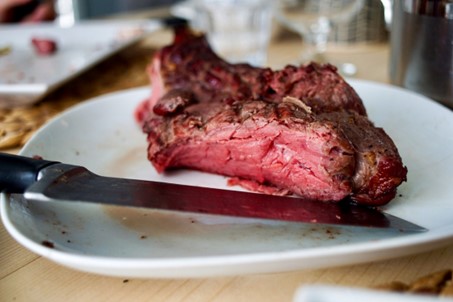As someone who is very much in love with steak, few things are as unpleasant to me as biting into a piece and discovering a mushy, almost sand-like texture. Delicious steak for many people is supposed to be quite tender and juicy, but it has no business being squishy.
A huge part of what makes steak turn out mushy is in the cooking and preparation process. The quality of the beef is often a major culprit as well. Generally, you’re missing a few things if your tenderloin or filet mignon doesn’t taste the way you intended.
Here are four things that might be making your steak mushy:
- Poor Quality Beef
- Over-marination
- Improper Cutting Of The Meat
- Over-cooking Using Sous Vide
-
Poor Quality Beef
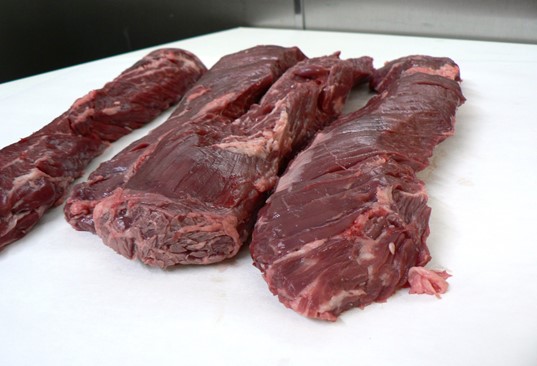
Photo: Stuart Spivack
If your steak isn’t of great quality, then there’s a chance it will turn out mushy rather than firm and juicy. Good meat should be dense, firm, and well-marbled. Once this is assured, the only way to cook a squishy or stringy steak is if you mess up the preparation.
Marbling is simply how the fat is spread throughout the meat. It’s important for making the steak juicy and flavorful. Look for white flecks and streaks of fat all over the meat to know if it’s well-marbled.
How To Spot Bad Steak
I handle a lot of fresh beef, so I can usually tell immediately if the meat is not of the quality I’m looking for. Sometimes, the signs are rather subtle. Other times, they are glaring. These are three signs your meat isn’t good enough to avoid turning out mushy:
- The color is off. Quality beef should be bright red or even a little purple. Brown beef isn’t fresh, and you can take a risk with it, but I wouldn’t recommend it. Meat with any other color should be avoided.
- It smells pungent or sour. Good meat might smell acidic or neutral, but it should never smell rotten.
- The meat feels as if it’s going to fall apart. It should be tightly packed.
-
Over-marination
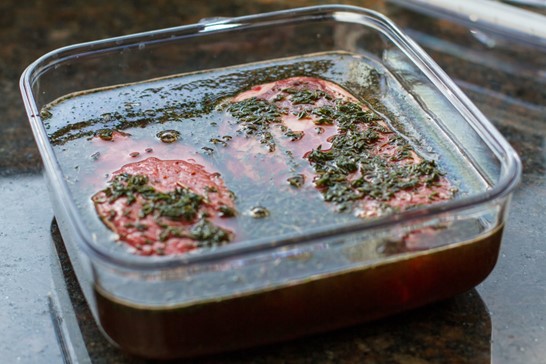
Photo: Mike Lang
I mourn for those who believe that letting meat marinate for 24 hours or more is a 5-star cooking tip. It’s not only a terrible way to prepare your steak; it’s also a good way to ruin it. What generally happens if you let meat sit in a marinade for 24 hours or longer is that it becomes unsafe for consumption.
Marinating beef doesn’t affect it the way you might think it does. First, there’s the fact that acidic marinating doesn’t tenderize steak; it can actually only make it firmer.
Also, marinades barely penetrate beyond a few millimeters of the beef. They simply add a coating of flavor to the surface. So what really happens when you let steak sit in an acidic marinade for too long is that the surface develops a mushy texture.
How long should you marinate steak?
Avoid marinating beef for too long, especially if you’ve added salt, sugar, and acid (e.g., lime, vinegar, or hot sauce). An ideal time period to marinate steak is typically 4 to 6 hours. Depending on the type of steak and if you use acid, you might not need more than 1 to 2 hours.
There’s also the unquestionable fact that you must marinate in a refrigerator. Doing it at room temperature makes the meat develop bacteria and spoil faster.
-
Improper Cutting Of The Meat
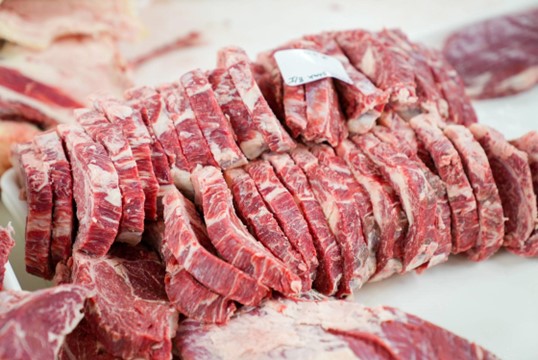
Photo: Mark Stebnicki
The way you cut your meat certainly has an effect on the texture. Any “steak expert” worth their salt knows cutting against the grain is the best way to achieve a tender texture. Cutting with the grain makes the steak chewy.
However, it’s possible that the way you cut and press the meat against the plate could lead to some level of mushiness. In this case, a huge factor will be that the meat wasn’t firm enough in the first place. While it’s not a guaranteed cause of squishy steak, avoid blunt, hard cuts on your meat by using a sharp knife. The less friction there is and the cleaner the cut is, the better.
-
Over-cooking Using Sous Vide
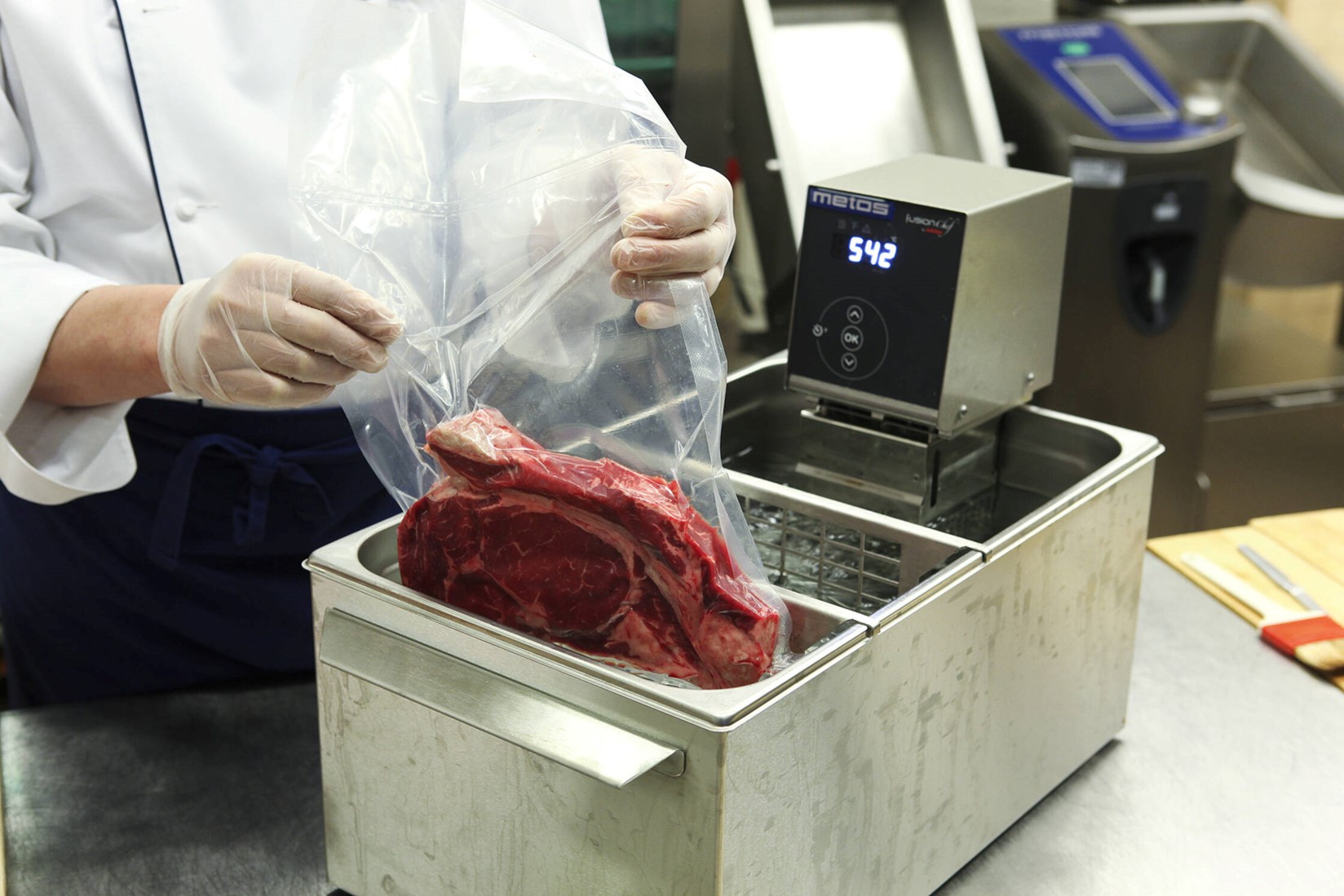
Photo: Erikoinentunnus
If you are like many amateur enthusiasts, you probably sous vide your steak. And why not? It’s probably the easiest way to make the perfect steak. With sous vide, you cook your meat “low and slow,” which basically means cooking at a very low temperature (typically 55 to 60 °C) for a long period of time.
This process is great because it cooks the steak evenly from the inside out, allowing you to achieve the medium rare standards you would find in prime steakhouses.
Where sous vide starts to go wrong is when you cook for too long. When you cook the steak for more than 6 hours, the connective tissue breaks down, and it begins to shred. Cooking for up to 24 hours or longer is almost guaranteed to make the steak mushy.
The ideal timeframe to cook a steak using the sous vide method is 1 to 4 hours. Anything longer, and you’re already ruining the texture.
About the Author
When Mark Weisman is not running his local gym, he’s fulfilling his lifelong passion of being a hunter and a cook. Also an avid traveler, Weisman spends a good chunk of the year traveling the world, discovering mouthwatering local recipes, and learning how to cook them. Passionate about exercise and healthy, delicious food, he also spends time sharing his knowledge on Steak & Barbells.

